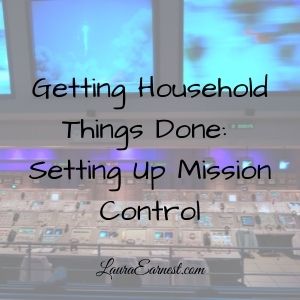
5 Steps To Adjust Your Balance
Last week we looked at how you can know if you are out of balance. Today we will give you 5 steps to get your life back into balance.
1. Know Where You’re Headed
Too often being out of balance is just sense of something being out of whack. We know that things aren’t like we want them to be. At the same time, if we had the bandwidth for figuring out why we were working so much we would have time to do other stuff and we wouldn’t be out of balance!
So the first trick of getting back into balance is to figure out where you want to be. And to find where you want to be, you need to know where you are.
Hopefully you’ve done the time log that I shared in 5 Signs You Are Out of Balance. If you’ve done it, then you know where your time is being spent. Otherwise you need to make an educated guess.
Once you have a good sense of where you are, ask yourself where you want to spend more time. Where do you want to spend less time? What is being neglected or ignored that is important to you? Are you living life in accordance to the priorities of things?
Then make a plan. Figure out where you want to be.
Personal input: My time log showed that I was working 12-14 hour days. Given the years I had worked 6 hours a week, this has been a big shock to my system. I also found that when I wasn’t working, I was so exhausted I was spending my time in no-return pursuits, such as vegetating in front of the television or reading a string of novels that left me with nothing more than an urge to correct the grammar and send it back to the authors. I know I need to limit my time working. I know I need to bring more recreational activities into my life. I need to cut back on the brain candy and consume something real.
2. Start Small
The next step feels like it should be to implement the plan. Unfortunately that is not the way to approach it. You need to start small to make the changes and not throw your life to the other side of the seesaw, still completely unbalanced.
Changing too much at once is just a recipe for disaster. It’s not sustainable, and it’s likely to cause as much discontent as the original unbalancing.
What is the one thing you could change today that would bring you closer to your ideal balance? If you have several, which gives you the biggest return? Pick one thing and write it where you will see it often – a sticky note, a note in your planner, your phone lock screen. Heck, write it on your hand if you need to.
Personal input: The biggest thing I can do is to make sure I utilize every moment of my planning block. I need to have a prioritized list of what needs to be done for tomorrow, and then beyond that. This is the biggest benefit to me, because if I use my planning block well then I don’t have to bring work home.
3. Manage Your Technology
Technology is your friend. At least I’ve been told that. I don’t buy it, though.
After a long career as a software engineer, I can honestly say that developers do not have their user’s best interest at heart. Their job is to make the software used. The most-used software programs are designed to capture your attention with beeps, whirrs, and whatnot. It’s designed to do that so your attention will be focused on the products, and then by the ads. (Television works the same way).
No, I’m not a Luddite. I love my tech. But at the same time, I use it. I don’t allow it to use me. (In Theory)
In order to get back in balance, you have to manage your technology. You have to be the one who decides when to use it, not the other way around.
Purge your phone apps. I talked about this on the old blog at Your Phone Clutter Is Hurting Your Productivity. Get rid of things that are not serving you.
And if checking work email on your phone is a problem, don’t. If a company demands that you must have 24 hour access to email on a phone, then I feel they can supply that phone. Besides, they can’t make you check it. And if it gets turned off, oops, oh well!
Personal input: my apps come and go. If I find myself spending too much time in something that is not serving me, I will get rid of it. Several games have gone that way (curse you, Candy Crush!) as well as social media, news readers and even my Kindle software.
4. Manage Your Location
This is fairly new to me. Doing certain things in certain areas helps maintain your boundaries. If you only work at home at the kitchen table, you will be reminded to take a break when people are trying to eat dinner around your piles of papers.
It can also help with your tech. If you know you are going home and you purposefully don’t bring work home with you, you are also managing your location.
Being aware of where you are can set physical limits on what you will do.
Personal input: I only do schoolwork on my school computer. I only do teacher stuff at the dining room table. (Sadly, our dining room is a formal room and almost never gets used, which is why there is currently a pile of plastic ghosts on the table and a basket full of discarded clothes in the corner) The dining room is not a comfortable place to sit for long periods, but I refuse to let school/work pollute my creative spaces in other areas of the house.
5. Set Your Boundaries
Balance is all about boundaries.
Balance is not better time management, but better boundary management. — Betsy Jacobson
Balance is about knowing where those lines lie so that you can stay within the lines. (In this case, coloring inside the lines is a healthy thing to do)
Set your boundaries. Tell yourself and other people where they are. “I will not work at home every night.” “I will not grade papers on weekends.” “I will not take my work with me on vacation.” “I will not answer phone calls from the office during family time.”
Boundaries are not about what other people do. Boundaries are about what we do so that we can lead a saner and more peaceful life.
Personal input: my boundaries are that I won’t work at home in the evenings. I did have to grade tests this weekend, but that was something I chose to do given that I couldn’t find uninterrupted time to do it at work. I have another boundary that I won’t read fiction during the week. This saves me from wasting untold hours consuming information that has no value, and only marginal entertainment value.
So getting back into balance is fairly straightforward. Know where you’re going. Start small. Manage your tech and your location. And then set those boundaries.
I’m not saying it’s easy. But it is well worth it when things get out of whack.
What do you think? Can you implement these steps this week? Can you commit to doing one of them? Share below.
And if you like this article and thing other people should read it, please use the buttons below to share it!
Image by Andrew Nours. Licensed under Creative Commons. Text added.




